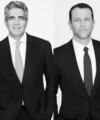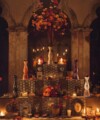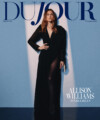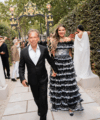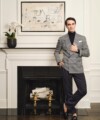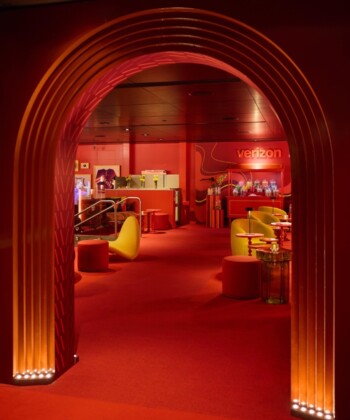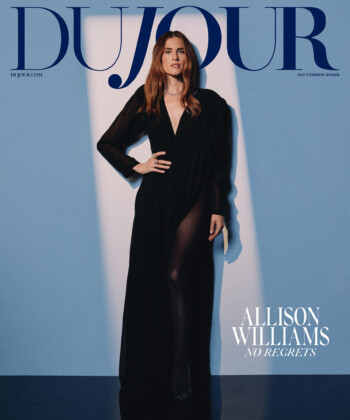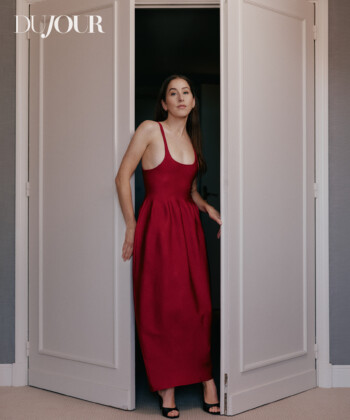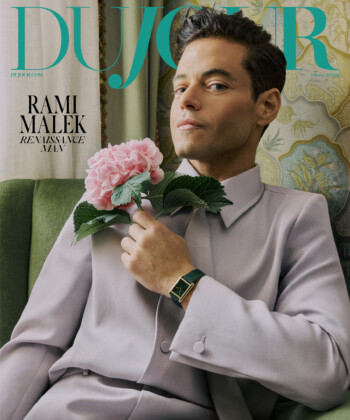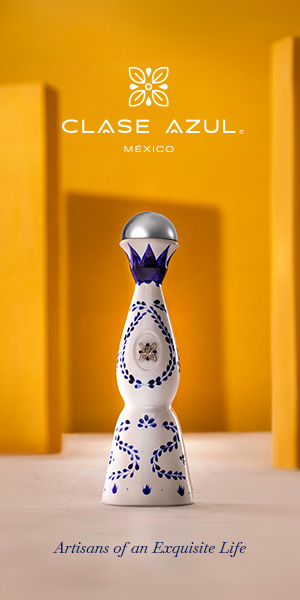Much has been written about the Beatles and their elusive founder John Lennon, from his early beginnings to his tragic end. In James Patterson’s new book, The Last Days of John Lennon, the author delves specifically into the fraught final years of the iconic band and the tragic death of Lennon. The true crime book features exclusive interviews with Lennon’s friends and associates (even bandmate Paul McCartney!), ensuring you won’t be able to put it down. What follows is an excerpt that details the band’s split as tensions between bandmates mounted.
Allen Klein calls a Saturday meeting on September 20. The Apple offices are empty as the Beatles file into the boardroom. Klein has hammered out a new deal with EMI’s Capitol Records that will sharply raise the Beatles’ cut of wholesale record prices from 17.5 to 25 percent. John, with Yoko by his side, stares across the table at Paul. Tell them now that you’re done, he wills himself. Instead, John launches an attack on Paul and his contributions to Abbey Road. “I liked the ‘A’ side but I never liked that sort of pop opera on the other side. I think it’s junk because it was just bits of songs thrown together. ‘Come Together’ is all right, that’s all I remember. That was my song.” Paul takes the slings and arrows. The pain gets worse. As Paul tries to convince John that they can find compromises to his complaints, John’s suddenly had enough. “You don’t seem to understand, do you? The group is over. I’m leaving,” he tells them. “I must say I felt guilty at springing it on them at such short notice,” he later reflects, though Paul says, “I remember him saying, ‘It’s weird, this, telling you I’m leaving the group, but in a way it’s very exciting.’ It was like when he told Cynthia he was getting a divorce.”

Clockwise from top left: The original “Silver Beatles” (Stuart Sutcliffe, John Lennon, Paul McCartney and George Harrison, with a sit-in drummer); Lennon; Mark David Chapman’s mugshot; mourners outside The Dakota; The Beatles celebrate the release of their album Sgt. Pepper’s Lonely Hearts Club Band.
On September 26, John returns to the studio. With Eric Clapton on guitar, Klaus Voormann on bass, and Ringo on drums, he records 26 takes of “Cold Turkey” and rejects them all. That same day, Abbey Road gets its U.K. release. “It’s strange that we have now reached the point where nobody worries TOO much about what the Beatles are doing on record,” Melody Maker writes in its review of what will go on to become the group’s bestselling album. Many critics single out the album’s second song, the one inspired by George’s wife, Pattie.“‘Something’ is a song of mine,” 26-year-old George says in an interview with the Detroit Free Press, “probably the nicest melody I’ve ever written.” John and Paul don’t agree on much these days, except that the song is indeed George’s best work yet. Frank Sinatra elevates the praise for “Something,” calling it “the greatest love song in the past 50 years” and covering the song in his own live performances. Musically, it is a fine farewell. The big valedictory comes, fittingly, on “The End,” with John, George, and Paul trading guitar solos (after an unprecedented Ringo drum solo) before landing on the line “And in the end / The love you take / Is equal to the love you make.” From his vantage point in the control room, engineer Geoff Emerick observed, “John, Paul, and George looked like they had gone back in time, like they were kids again, playing together for the sheer enjoyment of it. More than anything, they reminded me of gunslingers, with their guitars strapped on, looks of steely-eyed resolve, determined to outdo one another. Yet there was no animosity, no tension at all—you could tell they were simply having fun.” But that’s all in the past when, on October 20, Apple releases the single “Cold Turkey.” John’s testament is uncomfortably received. “‘Cold Turkey’ talks about thirty-six hours rolling in pain,” says the music coordinator of Detroit’s WKNR-FM. The BBC bans its airplay. “They thought it was a pro-drugs song,” John later tells BBC1 radio DJ Andy Peebles. “To some, it was a rock ’n’ roll version of The Man with the Golden Arm,” a 1955 Frank Sinatra film showing his character suffering from drug withdrawal. That same day, Apple releases John and Yoko’s Wedding Album in the United States (it comes out a few weeks later in the U.K., on November 7). They’d recorded it in April and, during a break on the afternoon of the 22nd, had gone up to the Apple rooftop to take part in a quick ceremony in front of a commissioner for oaths, ratifying John’s formal name change from John Winston Lennon to John Ono Lennon. “Yoko changed her name for me. I’ve changed mine for her. One for both, both for each other,” John declares. Wedding Album, side 1 of which offers John and Yoko pronouncing each other’s names for almost twenty-three minutes over a backing track of their heartbeats, marks the third of a trio of experimental albums that started with Unfinished Music No. 1: Two Virgins and continued with Unfinished Music No. 2: Life with the Lions (which also included a recorded heartbeat, that of their miscarried son). The album is a critical and commercial dud, but John shrugs it off. “We didn’t expect a hit record out of it,” he later tells the BBC. It was more personal than that. “When people get married they usually make their own wedding albums,” John says, something to “show to the relatives when they come round. Well, our relatives are the… what you call fans.” He continues, “We’re public personalities,” and—referring to another celebrity couple that happens to be celebrating a first anniversary that same October 20—“I’d enjoy reading Jackie and Onassis’s album.” The chorus of “Give Peace a Chance” echoes through Washington, D.C. On November 15, activist Pete Seeger leads 250,000 demonstrators through Lennon’s lyrics in protest of the mounting death toll in the Vietnam War, in which American casualties surpass 40,000. John and Yoko are heartened that their message is making a difference, pledging, “We’ll keep promoting peace in the way we do which, whichever way you look at it, is our way, because we’re artists and not politicians.”

John Lennon was initially delighted by the Beatles’ rapid rise to fame
John’s unbothered when he and Yoko are mocked for their activism. “Laurel and Hardy, that’s John and Yoko,” he comments. Better not to be taken too seriously anyway, “because all the serious people like Martin Luther King and Kennedy and Gandhi get shot.” Ten days later, John has his chauffeur drive the psychedelic Rolls to Buckingham Palace to return the MBE medal awarded him by the queen in 1965, along with a note stating it was being done in protest of the British government’s support of America in the Vietnam War “and against ‘Cold Turkey’ slipping down the charts.” He explains his decision in a live interview on BBC TV. “Really shouldn’t have taken it,” he says of the MBE medal. “Felt I had sold out. ‘I must get rid of it,’ I kept saying, ‘I must get rid of it.’ So I did. Wanted to get rid of it by 1970 anyway.” John and Yoko create an international ad campaign around the slogan “War is over! If you want it.” The message, appearing in newspapers and on billboards, is signed “Happy Christmas, John and Yoko.” Though some people find the message too facile — American antiwar activist John Sinclair sneers, “You are going to sound awfully fucking stupid trying to tell the heroic Vietnamese people that ‘the war is over if you want it’ while they are being burned and bombed and blown out of their pitiful little huts and fields”—John explains that it’s not about ignoring reality but about taking action. “You’ve got the power,” he says. “All we have to do is remember that: We’ve all got the power. That’s why we said ‘War is over if you want it.’ … Don’t believe that jazz that there’s nothing you can do, ‘Just turn on and drop out, man.’ You’ve got to turn on and drop in. Or they’re going to drop all over you.” The Daily Mail names John Clown of the Year for his actions. But on December 30, ATV in England airs an hourlong special featuring three men, each chosen as a Man of the Decade: American president John F. Kennedy, Vietnamese leader Ho Chi Minh—and British rock star John Lennon.
Rather than focusing on the violence and turmoil of the past decade, John has a sunnier view. “Not many people are noticing all the good that came out of the last 10 years,” John tells the interviewer, famed zoologist Desmond Morris. “And this is only the beginning,” he continues, sounding optimistic about the future of the peace movement. “The sixties was just waking up in the morning, and we haven’t even got to dinnertime yet. And I can’t wait, you know, I just can’t wait. I’m so glad to be around. And it’s just gonna be great. It’s gonna be wonderful and I believe it.”

Clockwise from top left: Crowds of mourners outside The Dakota; Lennon’s handwritten set list from the Beatles’ first concert in America in 1964; The Last Days of John Lennon by James Patterson; Lennon in New York City with Ono and their son Sean.
John and Yoko perform their new song on the Top of the Pops program, propelling it toward a top-five ranking in both the U.K. and America. It’s the first time one of the Beatles has performed on the program without the others.
Meanwhile, Paul continues creating 13 songs to fill a homemade eponymous album, scheduled for release on April 17. The rivalry between the two songwriting partners is ferociously rekindled. The supposedly back-to-basics songs that the Beatles recorded in the studio and performed on the rooftop, as well as the film documenting the making of this album, have yet to come out. All four Beatles have approval over who will polish the songs to create an album they’ll call Let It Be. John and George propose Phil Spector, and Paul and Ringo agree. But Paul is horrified at what Spector does to his songs. When Spector begins work, on March 23, the George Martin–produced version of “Let It Be” (the Beatles’ last single with their longtime producer) is already No. 2 on the UK charts. “Let It Be” is Paul’s song, as is “The Long and Winding Road.” Spector remixes both. When Paul hears “harps, horns, an orchestra, and women’s choir” on “The Long and Winding Road,” he’s first astonished, then enraged that he wasn’t consulted. “I would never have female voices on a Beatles record,” he tells journalist Ray Connolly. Things are further complicated when McCartney, Paul’s solo album, is pushed from April to June so that Let It Be can come out first. John and George write Paul a letter (addressed “From Us to You”), which Ringo delivers on their behalf. It reads, “We’re sorry it turned out like this—it’s nothing personal. Love John & George. Hare Krishna.” But Paul is still livid and takes it all very personally. In an effort to appease him, Ringo persuades the others to reinstate McCartney’s April 17 on-sale date.

Clockwise from top left: Lennon wearing a “People for Peace” armband on the television program Top of the Pops; Lennon and Ono marry in 1969 and stage a lengthy “Bed-In” Peace Protest as part of their honeymoon; Lennon at the piano where he wrote the album Imagine.
On April 10, Apple issues a press release touting the health of the band: “The Beatles are alive and well and the Beat goes on, the Beat goes on.” The release of McCartney is a week away, but Paul can’t face promoting the album with a press conference. He instead has Apple publicist Peter Brown (who’d orchestrated John and Yoko’s wedding plans) craft a questionnaire. When asked if this was the start of a solo career or a break with the Beatles, Paul replies “Time will tell” and “Both”; his response to whether his break with the Beatles will be temporary or permanent is “I don’t really know.” But his one-word answer to the follow-up question is a bombshell:
Q. Do you foresee a time when Lennon-McCartney will become an active songwriting partnership again?
A. No. The Daily Mirror breaks the news—PAUL QUITS BEATLES—and he confirms it, telling the Record Mirror on April 18 how much working solo suits him. “I only had me to ask for a decision, and I agreed with me.” John is woken from a deep sleep when reporter Ray Connolly calls for his comment. John is floored by the double cross. “Oh, Christ,” he shouts into the phone. “He gets all the credit for it!” Let It Be goes on sale May 8. The next day, New Musical Express publishes a searing review titled “Have the Beatles Sold Out?,” which decries the album, with its doubled sticker price and funereal black cover, as a “cardboard tombstone.” “Musically, boys, you passed the audition,” assesses the critic for Rolling Stone, harking back to John’s closing line atop the Apple roof before concluding that the flaw of overproduction “somehow doesn’t seem to matter much anymore anyway.” Paul defends himself to the press: “I didn’t leave the Beatles. The Beatles have left the Beatles, but no one wanted to be the one to say the party’s over.” The next time John sees his former bandmate, he’s larger than life. With McCartney atop the U.S. Billboard charts on the strength of the anticipation of Paul’s solo effort, which includes the ballad “Maybe I’m Amazed,” John and Yoko travel to San Francisco to meet with 24-year-old Rolling Stone writer Jann Wenner about booking an interview. The three of them (and Jann’s wife, Jane) slip unrecognized into a nearly empty theater to see Let It Be. Though the film (which goes on to win an Oscar and a Grammy for Best Original Score) had premiered in New York on May 13, none of the Beatles attended. John is seeing it now for the first time. At the sight of Paul singing on the rooftop of Apple records, first John, then Yoko, dissolves into tears. “He’s crying, she’s crying, and we’re just trying to hold on to ourselves,” Wenner says. “You’re there helping come to the emotional rescue of the Beatles.”
Main Image: Paul Goresh/Popperfoto via Getty Images. First Inset: Michael Ochs Archive/Getty Images (1, 2); Mark and Colleen Hayward/Getty Images (3); Bureau of Prisons/Getty Images (4); Keystone/Getty Images (5). Second Inset: David Farrell/Redferns. Third Inset: Keystone/Getty images; Robert MacPherson/AFP via Getty Images; Vinnie Zuffante/Michael Ochs Archives/Getty Images. Fourth Inset: Chris Walter/Wireimage; Central Press/Getty Images; Archive PL/Alamy Stock Photo.










